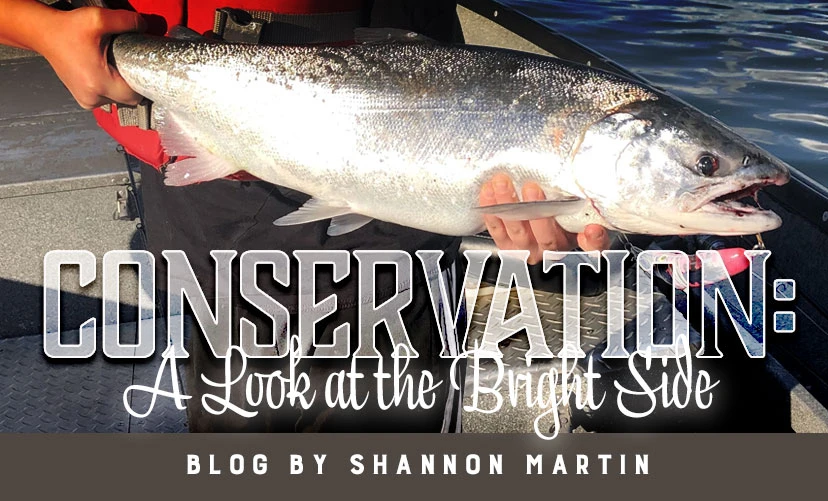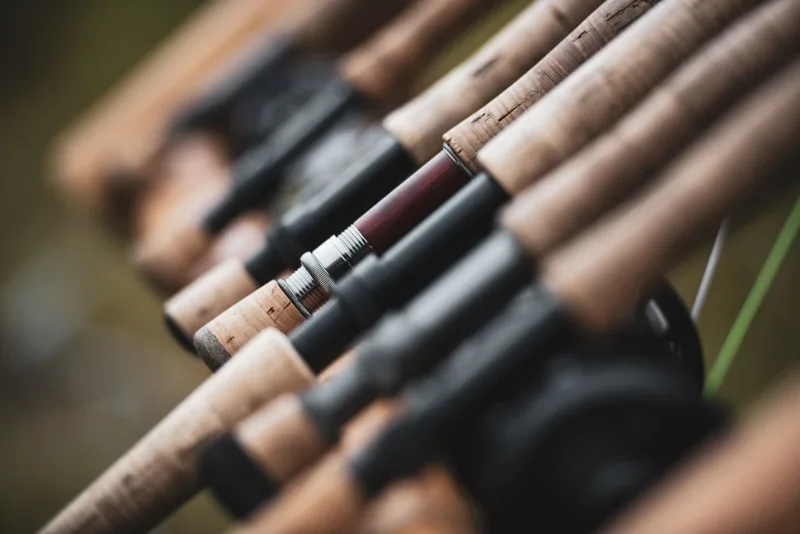Kenai River Sportfishing Association, Alaska’s largest advocacy organization for sportfishing, is dedicated to conservation efforts. Learn about their efforts around the state and how you can contribute to the cause.

by Shannon Martin
There is so much buzz around conservation, but what does it really mean? We can all have an opinion, but it takes action to actually make change. At the Kenai River Sportfishing Association, we are celebrating forty years of conservation, yet some people still have no idea who we are or what we’ve done. Kenai River Sportfishing Association, known as KRSA (pronounced Kersa) was founded in 1984 primarily to fight for the conservation of the world famous Kenai River king salmon stock. Later, we broadened our mission to ensure the sustainability of the Kenai River and to help protect recreational fishing opportunities throughout the state of Alaska.
KRSA is actually the largest sportfishing advocacy organization in Alaska with thousands of members plus a dedicated board of directors, volunteers and staff. Each project we undertake aims to support the organization’s four facets: habitat conservation, fisheries management, fisheries education and research.
The World Famous Kenai River
The Kenai River is Alaska’s most popular place to fish. It has long been famous as a world-class fishery. With abundant public-access locations, and being less than three hours from Alaska’s largest population base and the Ted Stevens International Airport, it gets visited by droves of people, especially when fish pour into the river. Our local way of life, economy, and history depend on the river. With so many folks accessing the Kenai, it’s vital that we protect the riparian habitat zone.
The riparian habitat zone is the vegetation that lies along the edge of a water body and it is important to mitigate erosion. Trees, grasses and shrubs stabilize banks and they also provide shelter and reduce water velocity for salmon fry.
Part of that riverbank protection success can be attributed to KRSA’s first angler access restoration project. In 1996, the Classic Fishwalk at the Soldotna Visitor Center was installed as the first elevated, light-penetrating angler-access platform on the Kenai. It’s still one of the main public-access points for anglers as well as provides easy access to walk along the Kenai River. The Fishwalk has been extended and links into the Centennial Loop Trail that is a 1.5-mile, year-round accessible loop. Kenai River Sportfishing Association fundraising efforts helped with this and much more.
Current Projects: Big Eddy Restoration
Now, let’s bring you up to date on current efforts—Big Eddy Restoration and Improvements. KRSA, working with Alaska State Department of Parks and Recreation, has won an Exxon Valdez Oil Spill Trustee Council (EVOS) grant award to upgrade the Big Eddy State Recreational Site at mile 16.8 of the Kenai. With public access, Big Eddy is a widely used Alaska State Park area. With all that use, stream bank and park facilities have deteriorated over the years and they now require repair and replacement. The Big Eddy restoration project parameters include: restoring approximately 150 feet of degraded riverbank; replacing and/or adding 850 linear feet of light-penetrating boardwalks; improving public access through the establishment of new walkways and stairwell river-entry points; installing five interpretive educational panels; providing appropriate parking for up to 30 vehicles including handicap parking; and paving the access road. Project construction is scheduled to begin in 2025.
In addition to the Soldotna Fishwalk and Big Eddy angler access and restoration projects, KRSA has also provided match funding or advocated for improvements at these public Kenai River locations: Cunningham Park, Eagle Rock, Pillars, Slikok Creek, Centennial Park, Don Gilman River Center, Swiftwater Park, Rotary Park, Moose Meadows, Morgan’s Landing, Izaak Walton, Bing’s Landing, Jim’s Landing, Russian River Ferry & Confluence area. Our fundraising and grant efforts have gone a long way, as does our involvement.
Restored Riparian Fish Habitat
In the early 1990’s up to 20% of the riparian fish habitat along the Kenai River below Skilak Lake was degraded. More than 95% of this degraded riparian fish habitat has been restored to a healthy state. To date, more than 400 projects on public- and private lands have made more than 38,000 linear feet of riparian habitat more fish friendly. Partnering with Alaska Department of Fish and Game (ADF&G) and the U.S. Fish and Wildlife Service (USFWS), KRSA contributed funding and advocated for this great fish habitat conservation program.
The Cost Share Program provides matching funds and technical assistance for public-access projects and to private landowners to develop and implement fish-habitat protection and restoration projects. Whether through the removal of hazards such as rock jetties, 55-gallon metal drums, bulkheads and other debris, the installation of light-penetrating boardwalks, or the rehabilitation of fragile riparian habitats, Cost Share has had a lasting and measurable impact on the health of the Kenai River. This program is currently funded by ADF&G, USFWS and grants.
Join the Cause
KRSA will continue to promote responsible angler access and opportunities for sustainable fishing now and for many more decades to come. All this change and improvement came from action; from the volunteers and staff, as well as the enormous fundraising efforts and grant acquisition. Amazingly, joining KRSA as a lifelong member is free. There’s strength in numbers. The minimum effort you can do to take action is to sign up for your no-cost membership and spread the word about the work we are doing. That alone will help continue the work that began 40 years ago. And if you want to get even more involved, we can always use a capable set of hands. Visit krsa.com to join.
#####
Shannon Martin is the Executive Director of Kenai River Sportfishing Association. An avid angler and lifelong Alaskan, Shannon is a much needed advocate for fish conservation.


